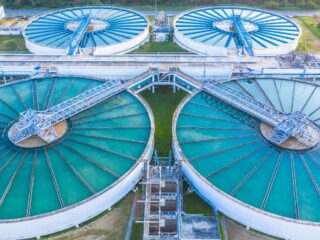
In the world of real estate, the value of a property is often intertwined with its aesthetic appeal and functional design. For homeowners and investors alike, understanding the power of interior design is key to not only enhancing the living experience but also significantly boosting the property’s market value.
This article delves into the art of using interior design as a strategic tool, one that transforms ordinary spaces into captivating environments that resonate with potential buyers. We explore how thoughtful design choices can elevate a property from merely functional to exceptionally desirable, thus commanding a higher value in the competitive real estate market.
Understanding the Market
Navigating the property market requires a keen understanding of what drives value. In today’s market, buyers are not just looking for a space to inhabit; they seek environments that reflect their lifestyles and aspirations. This shift in buyer mentality has made interior design a critical factor in property valuation. A property that resonates with current trends and buyer preferences is more likely to command a higher price. It’s about striking the right balance between timeless elegance and contemporary design. By staying attuned to the latest market trends and buyer expectations, homeowners can make strategic interior design choices that significantly enhance their property’s appeal and value.
Key Interior Design Elements that Add Value
When it comes to interior design, certain elements have a proven track record of adding value to properties. For instance, well-designed, modern kitchens and bathrooms are often high on the list of priorities for potential buyers. These spaces, when upgraded with high-quality fixtures and finishes, can dramatically increase a property’s allure. Similarly, an optimised layout that maximises space and light can transform the look and feel of a home, making it more inviting and functional. Another aspect to consider is the choice of fixtures and finishes. High-quality, durable materials not only last longer but also add a touch of luxury that buyers appreciate. By focusing on these key elements, homeowners can effectively use interior design to boost their property’s market worth.
But, of course, interior design improvements are not the only way to enhance the worth of a property. For a more in-depth understanding of how various other upgrades (such as extensions and conversions) can enhance value, this article offers some useful insights.
Colour and Lighting: The Subtle Game-Changers
The strategic use of color and lighting in interior design can have a profound impact on the perceived value of a property. Colours set the mood and tone of a space; hence, choosing the right palette is crucial. Neutral and earthy tones often work well, offering a canvas of elegance and versatility that appeals to a broad range of buyers. These hues create a sense of space and tranquility, making rooms appear larger and more inviting.
Lighting, on the other hand, is about more than just illumination. It’s an integral part of the design that accentuates the architectural features, enhances the colors, and creates an inviting ambiance. Natural light should be maximized wherever possible, but where it falls short, well-placed artificial lighting can make a significant difference. Layered lighting, combining ambient, task, and accent lighting, can transform a room, highlighting its best features and making it more appealing to potential buyers.
Maximising Space and Functionality
In interior design, the perception of space is often as important as the actual square footage. Clever design tricks can make a property feel more spacious and functional, attributes highly valued in the real estate market. This can be achieved through open-plan layouts, smart storage solutions, and multi-functional furniture. Mirrors are another excellent tool for creating an illusion of space, reflecting light and views to make rooms appear larger and more open.
Functionality is equally important, especially in urban properties where space is at a premium. Homes that offer flexible living spaces, such as convertible home offices or modular kitchens, meet the evolving needs of modern homeowners. These practical yet aesthetically pleasing solutions not only enhance the daily living experience but also add to the property’s overall value. By focusing on maximizing both space and functionality, homeowners can significantly increase their property’s appeal in the competitive real estate market.
Sustainable and Eco-Friendly Design Choices
In the current climate of environmental awareness, sustainable and eco-friendly design choices are becoming increasingly important in the realm of property valuation. Eco-friendly features such as energy-efficient appliances, solar panels, and sustainable building materials are not only appealing for their environmental benefits but also for the long-term cost savings they offer. These elements can significantly enhance a property’s appeal to a growing segment of environmentally conscious buyers.
Incorporating green technologies and materials into a home’s design not only aligns with the global shift towards sustainability but also adds a layer of modernity and responsibility that is highly valued in today’s market. Whether it’s through better insulation, the use of reclaimed wood, or installing low-energy lighting systems, these eco-friendly upgrades can make a property stand out and command a higher price.
Staging to Sell: The Final Touch
The final touch in preparing a property for sale is staging – the art of presenting a home in the best possible light. Staging involves strategically arranging furniture and decor to showcase the property’s potential. It allows buyers to envision themselves living in the space, which is crucial in driving emotional engagement and, subsequently, a higher valuation.
Effective staging goes beyond mere decoration; it’s about creating a lifestyle that potential buyers aspire to. This could mean decluttering spaces, rearranging furniture to improve flow, or adding small touches like fresh flowers or artwork. The goal is to make the property feel warm, welcoming, and aspirational. When done correctly, staging can significantly enhance a property’s attractiveness and lead to a quicker sale at a higher price point.
The Takeaway
Strategic interior design is a powerful tool for enhancing the value of a property. By aligning with market trends, focusing on key elements like modern kitchens and bathrooms, optimising the use of colour and lighting, maximising space and functionality, and incorporating sustainable features, homeowners can significantly increase their property’s appeal and market worth.
The addition of staging as the final touch ensures that the property is showcased at its best, ready to captivate potential buyers. With these thoughtful design considerations, a property is not just a space to live in; it becomes a compelling investment poised for success in the competitive real estate market.







